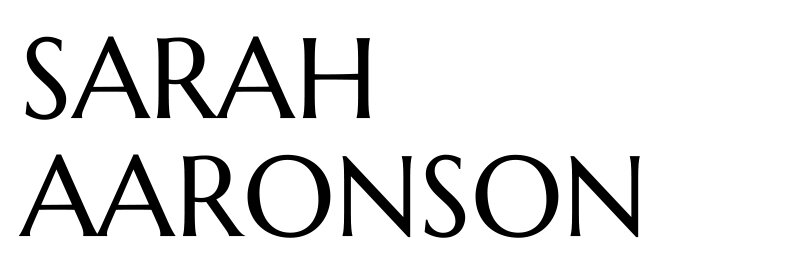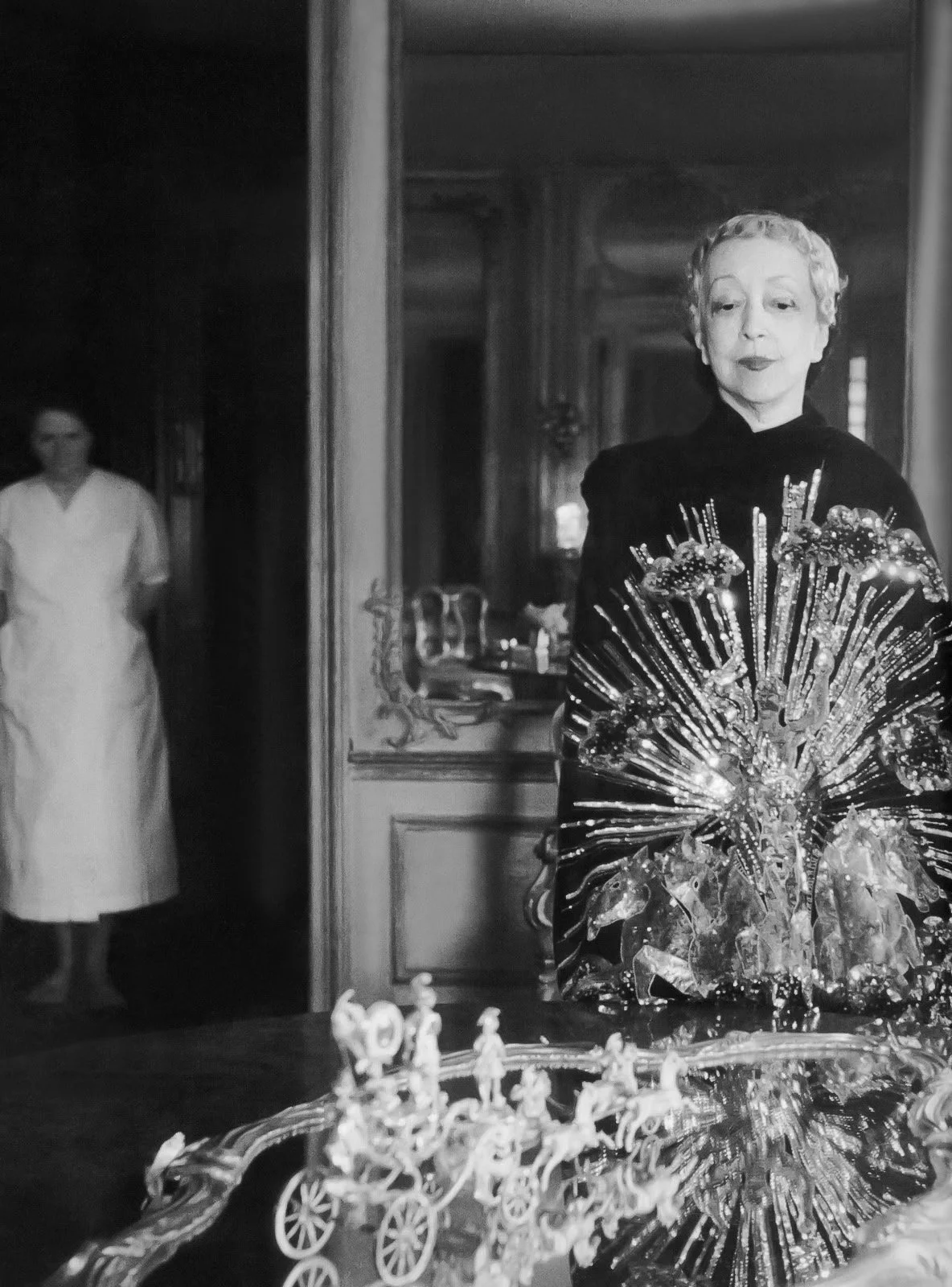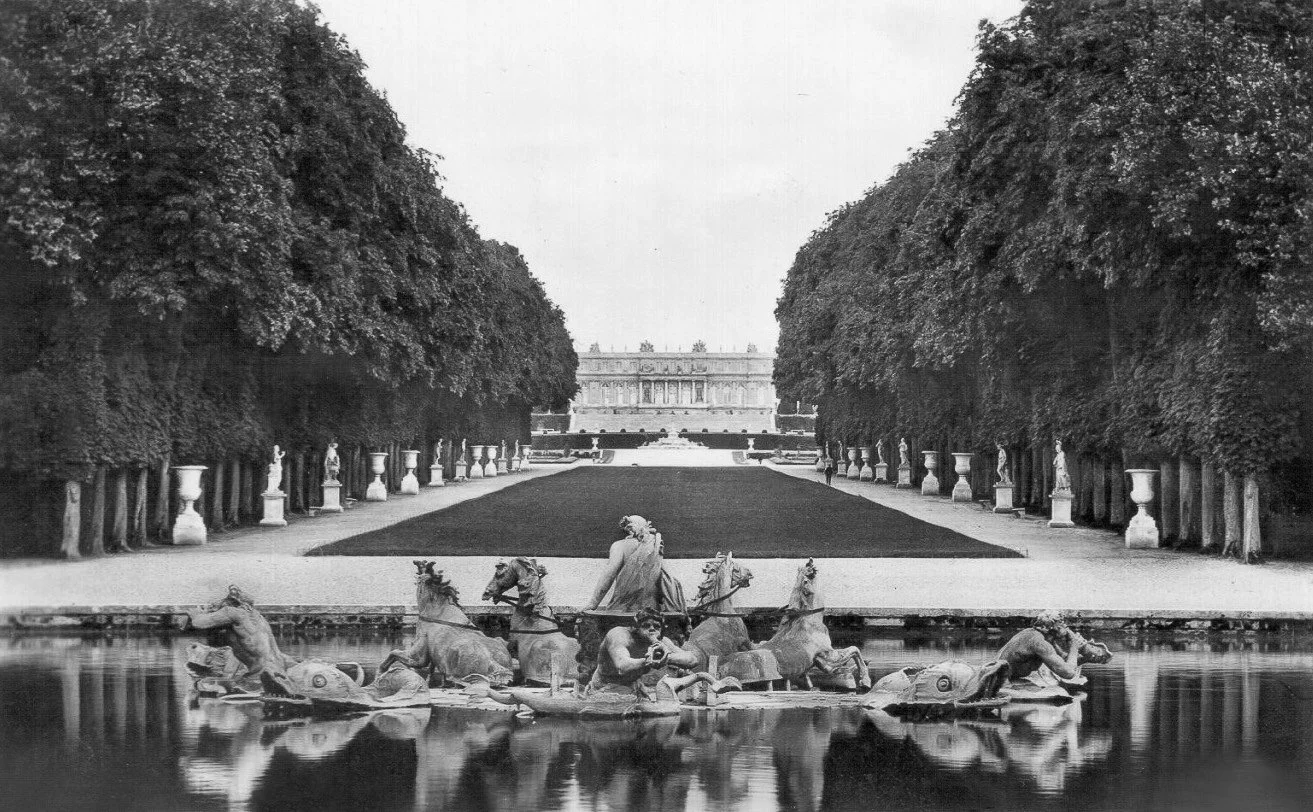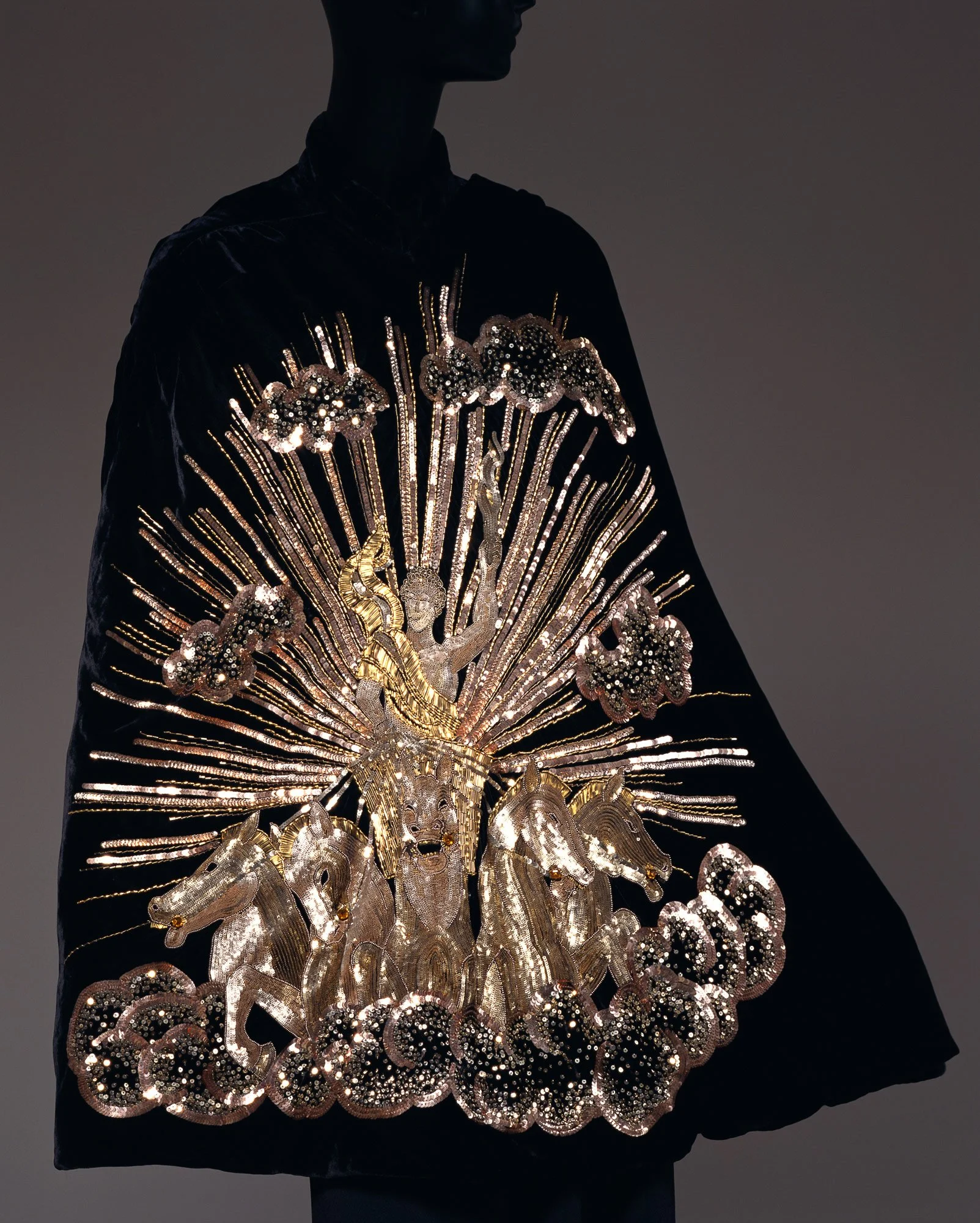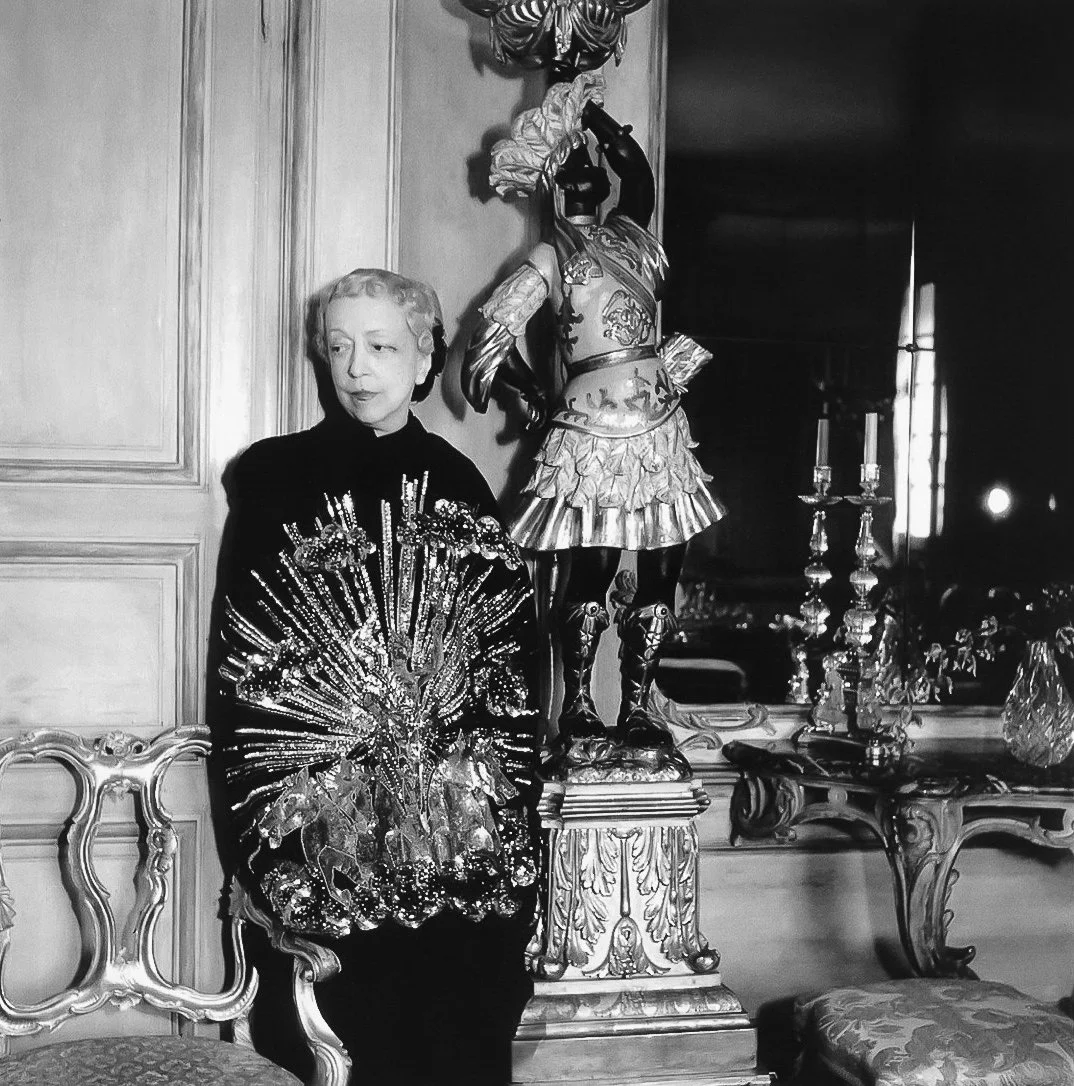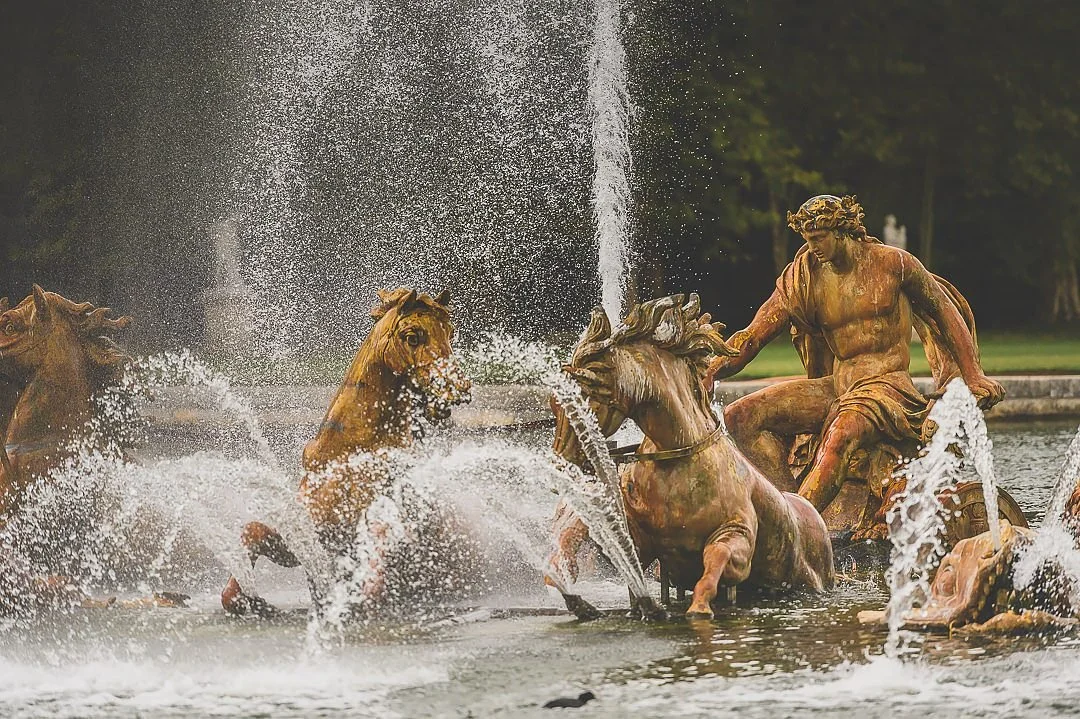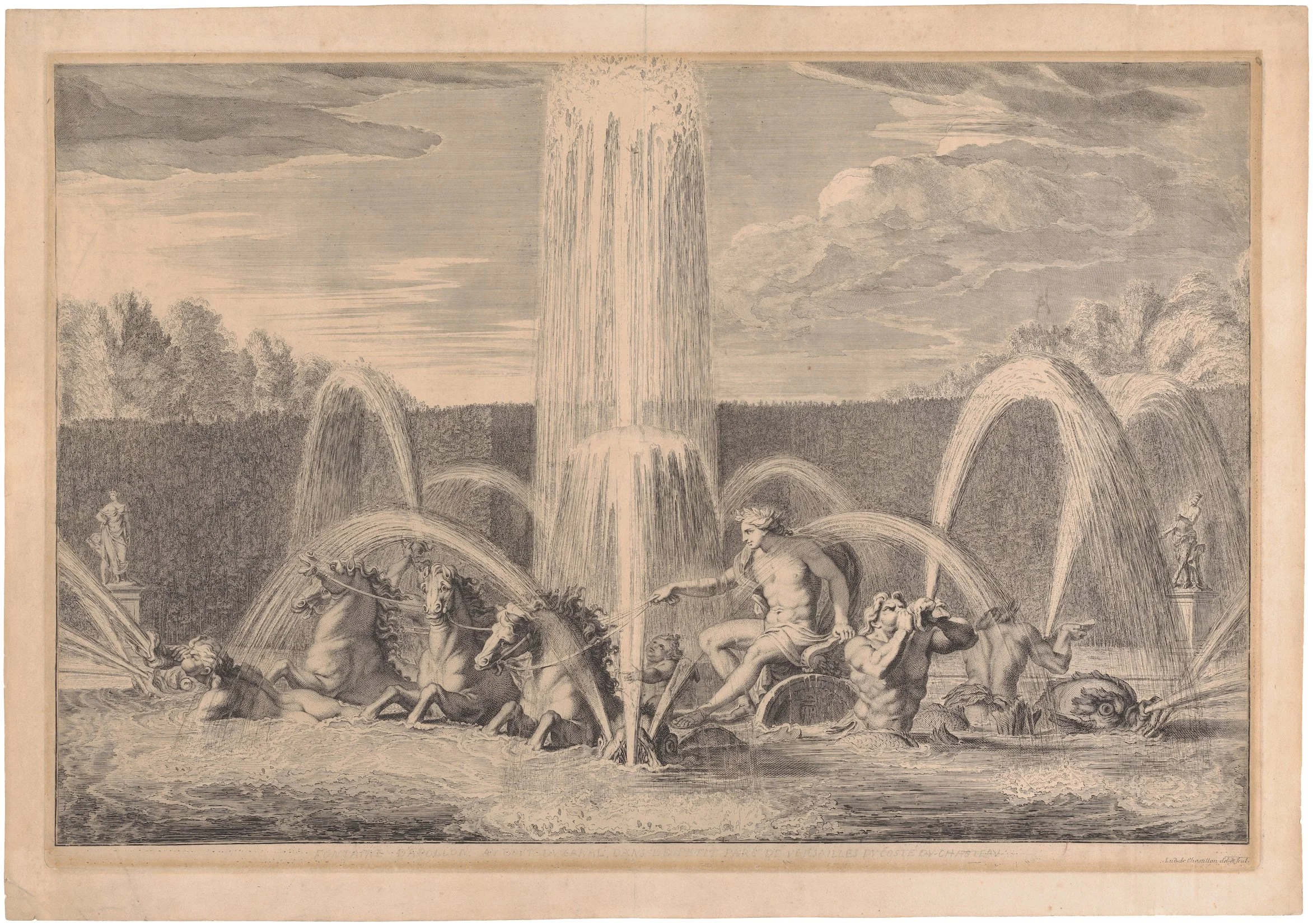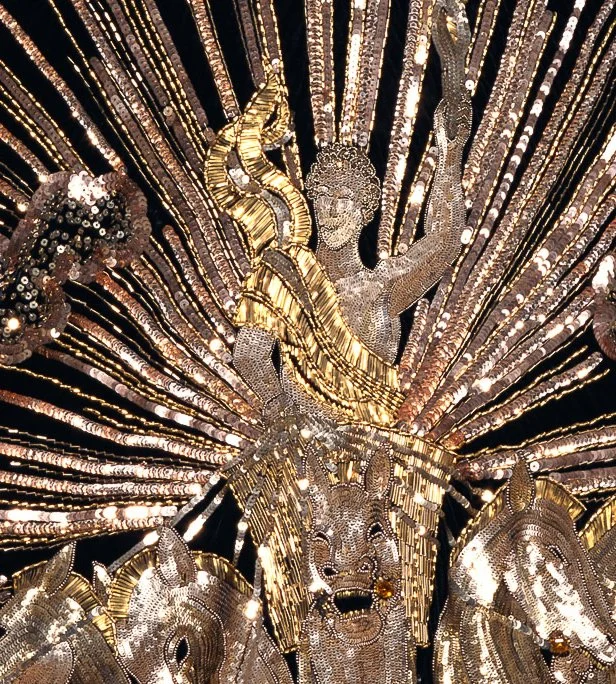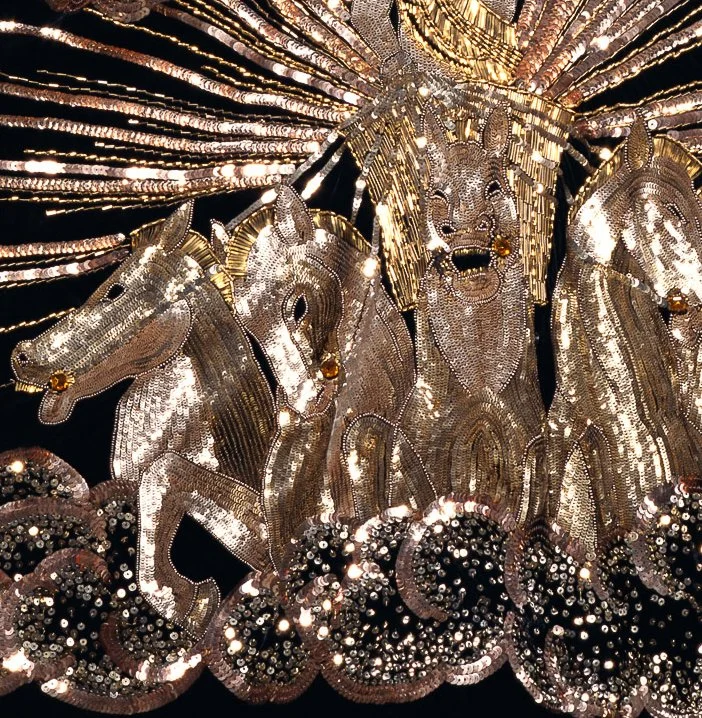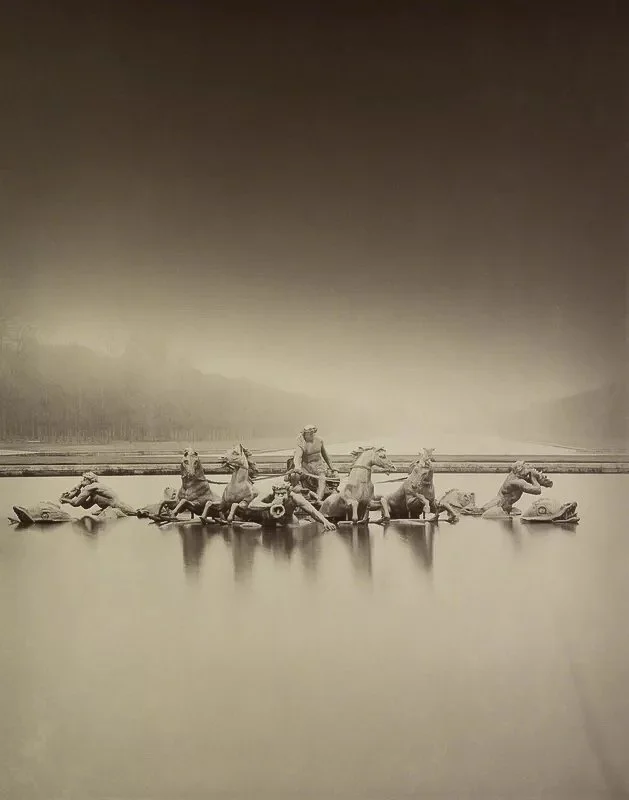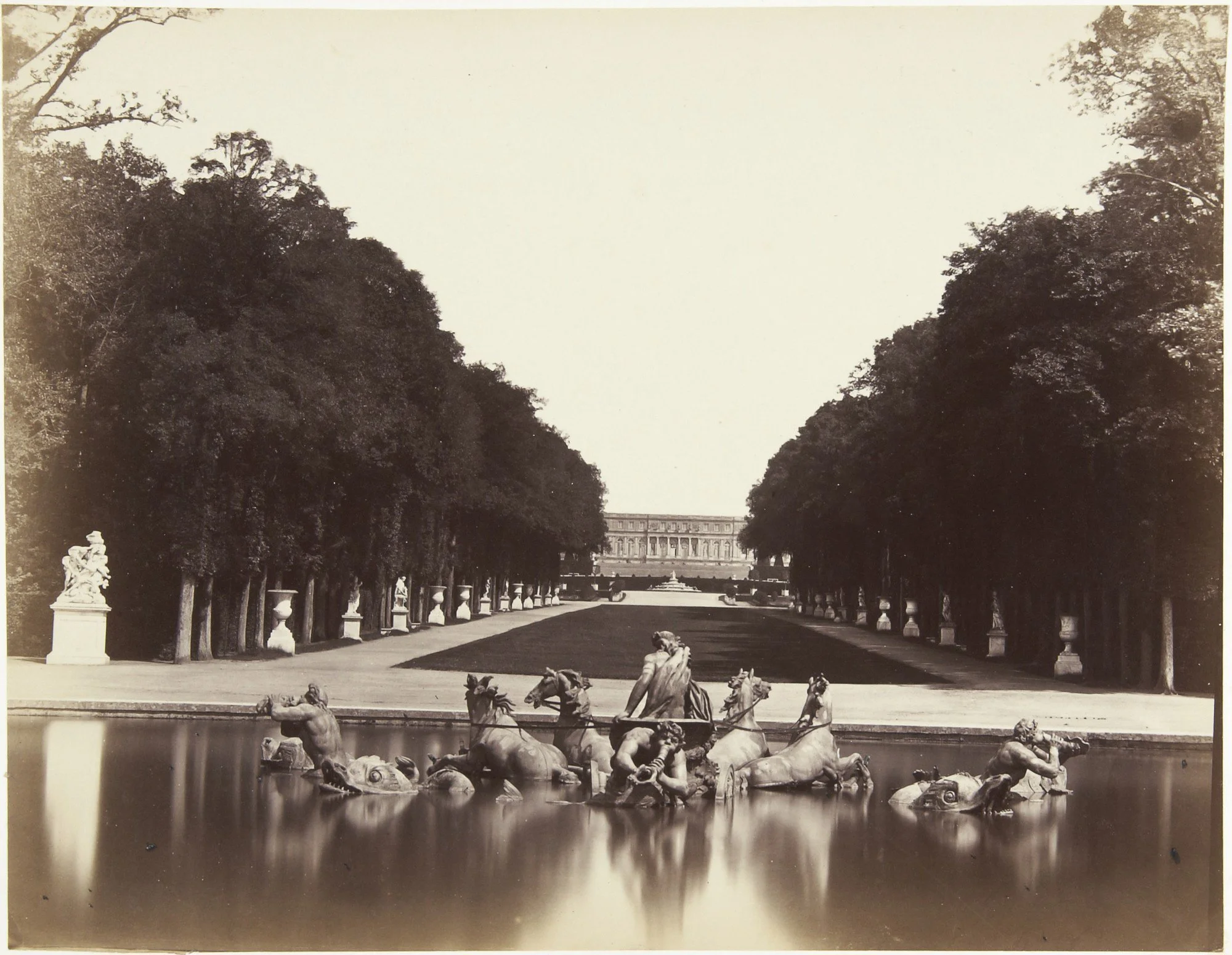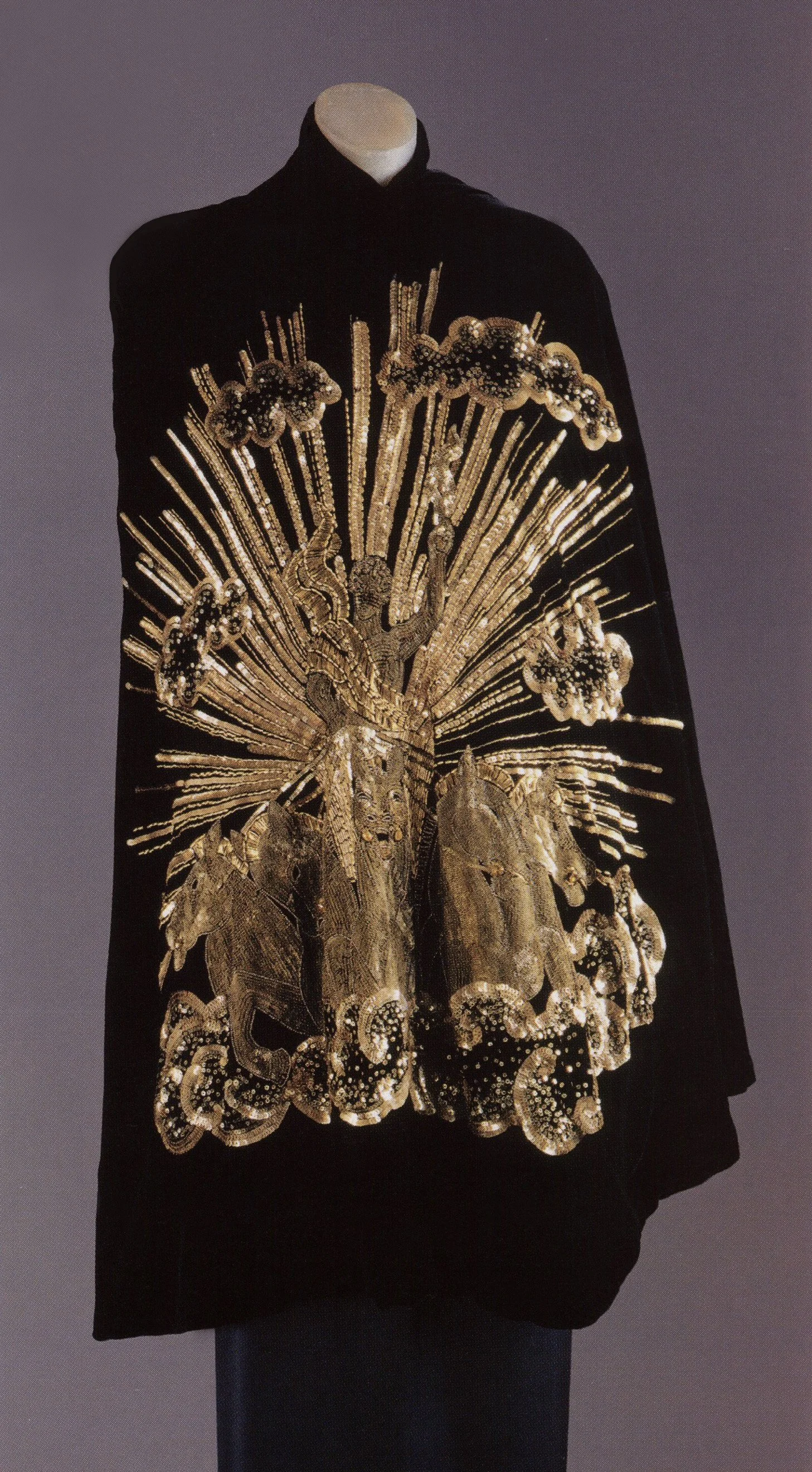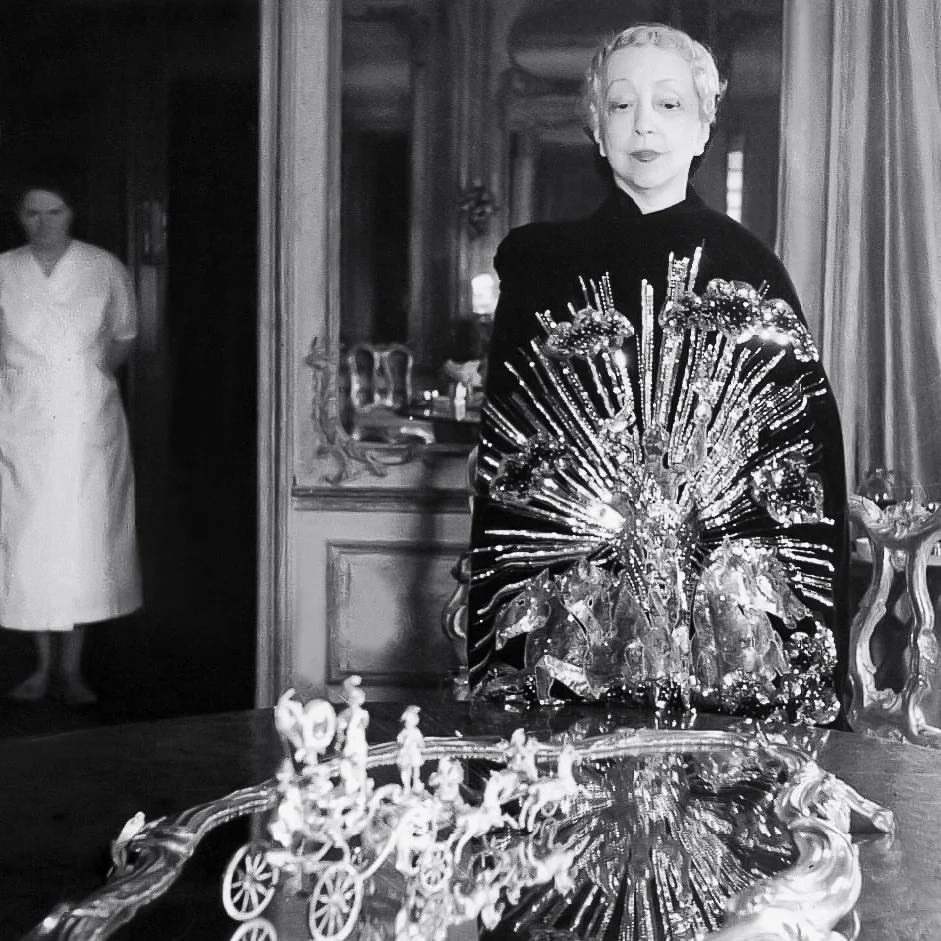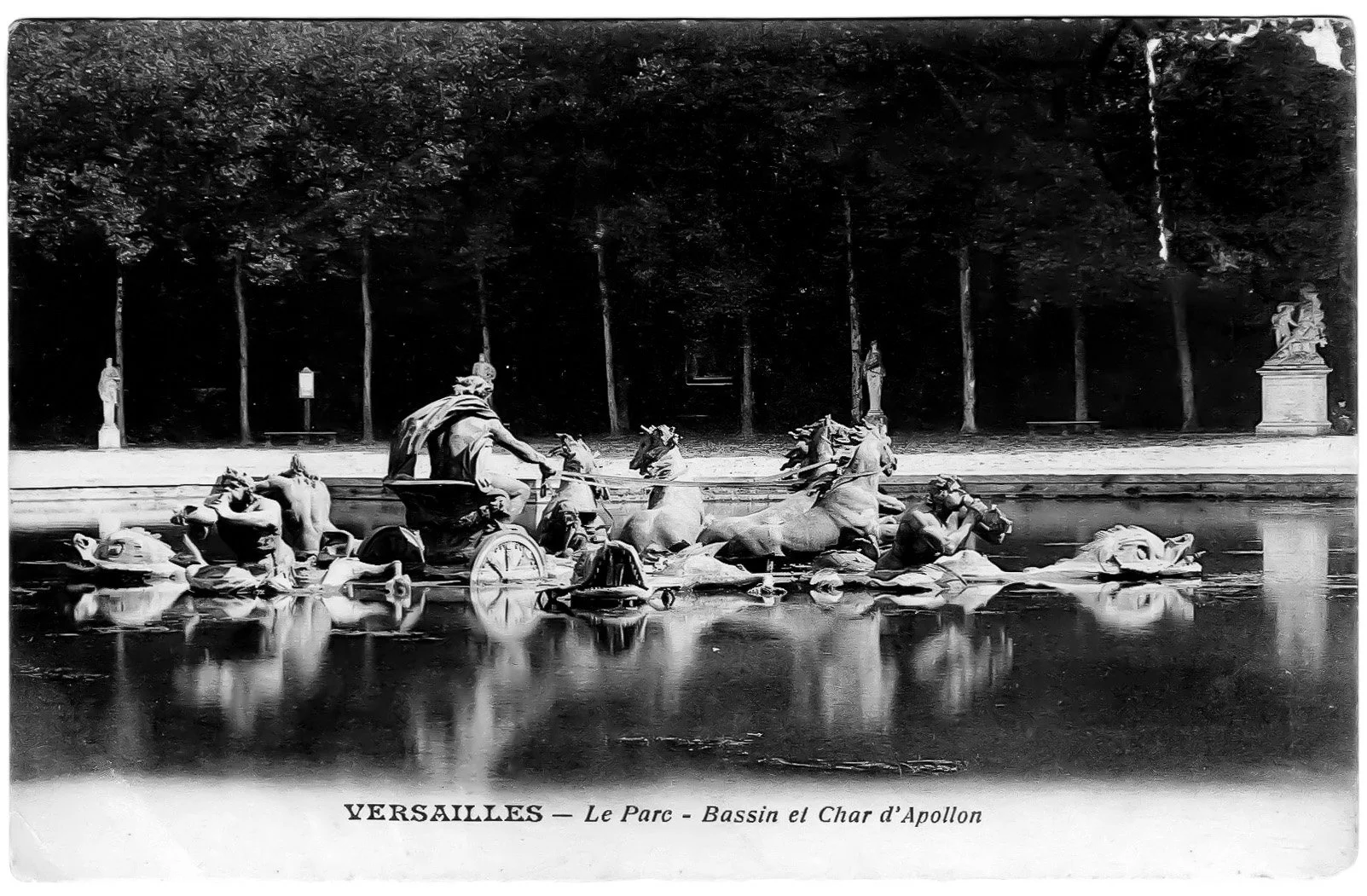FOUNTAIN OF COUTH
Elsie de Wolfe, later known as Lady Mendl, modeling her Apollo of Versailles Cape • 1938 • Cecil Beaton • The National Portrait Gallery, London
How Elsa Schiaparelli’s Apollo of Versailles Cape from her Autumn 1938-39 Cosmique collection, which was inspired by the solar system, constellations, astronomy, and most notably in the case of this spectacular cape, the Palace of Versaille’s Fountain of Apollo. Elsie De Wolfe, one of Schiaparelli’s most notable clients, was photographed by Cecil Beaton striking a pose cloaked in the ever magical cape…
Vintage postcard depicting Le Bassin d'Apollon (The Fountain of Apollo)
Designed by Charles Le Brun, the court painter of Louis IV and built between 1668 and 1671 by Roman Sculptor Tuby, the classic Fountain of Apollo is located at the grand Palace of Versailles in France. The storied fountain, locally known as Le Bassin d'Apollo, depicts the Greek Sun god Apollo rising from the depth of the sea at daybreak in his four-horse chariot.
The Apollo of Versailles Cape • Autumn / Winter 1938 - 1939 Haute Couture Cosmique Collection, often referred to as the Zodiac or Astrology Collection • Image courtesy of Taishi Hirokawa for The Kyoto Costume Institute, Kyoto
“The embroidery on this black silk-velvet cape was created by Lesage in Paris. It was inspired by the Le Bassin d’Apollon at the Palace of Versailles, which was nearby de Wolfe’s beloved home, the Villa Trianon. The cape features Greek sun God Apollo raising his bow into the air while riding in his chariot. The five stallions gallop forward, leaving a trail of dust, all of which are backed by a giant sunbeam. The clouds of dust at the stallion’s feet are mirror images of the clouds in the sky. Apollo, his bow, the stallions and outlines of the dust and clouds are comprised of petit round paillettes. The interior of the dust and clouds are dotted with silver round paillettes. Apollo’s chariot and clothing, as well as the horse’s teeth and manes were created using gold bugle beads. Gold metallic thread is used throughout. The large sunburst shining from behind Apollo is by far the most eye-catching element of this cape. It was created from alternating rows of gold and silver paillettes, interspersed with gold bugle beads and gold metallic thread.” • Renée Nicole Gray
Le Bassin d'Apollon (The Fountain of Apollo) • Circa 1668 - 1671 • Charles Le Brun • Chateau de Versailles, France • Image courtesy of J.C. N’Diaye
Detail of the Apollo of Versailles Cape • Autumn / Winter 1938 - 1939 Haute Couture Cosmique Collection, often referred to as the Zodiac or Astrology Collection
Elsie de Wolfe, later known as Lady Mendl, modeling her Apollo of Versailles Cape • 1938 • Cecil Beaton • Image courtesy of Schiaparelli & The Artists by André Leon Talley, Suzy Menkes & Christian Lacroix
Vintage photograph depicting Le Bassin d'Apollon (The Fountain of Apollo)
Le Bassin d'Apollon (The Fountain of Apollo) • Circa 1668 - 1671 • Charles Le Brun • Chateau de Versailles, France
Le Bassin d'Apollon (The Fountain of Apollo, Versailles) • Circa 1683 • Louis de Châtillon • Rijksmuseum, Amsterdam
Detail of the Apollo of Versailles Cape • Autumn / Winter 1938 - 1939 Haute Couture Cosmique Collection, often referred to as the Zodiac or Astrology Collection
Le Bassin d'Apollon (The Fountain of Apollo) • Circa 1668 - 1671 • Charles Le Brun • Chateau de Versailles, France
Detail of the Apollo of Versailles Cape • Autumn / Winter 1938 - 1939 Haute Couture Cosmique Collection, often referred to as the Zodiac or Astrology Collection
Fountain of Apollo, Versailles, 1865 • 1994 • McDermott & McGough • Image courtesy of Galerie Andrea Caratsch
Le Bassin d'Apollon (The Fountain of Apollo, Versailles) • Circa 1680’s • Adam Perelle • The Metropolitan Museum of Art, New York City
A trial run for an embroidery featuring gold sequins, bugle beads and bullion, eventually used on the Apollo of Versailles Cape • Image courtesy of Schiaparelli : Empress of Paris Fashion by Palmer White
Untitled • Apollo Fountain, Versailles • Circa 1870 • Achille Quinet • Princeton University Art Museum, Princeton
Detail of the Apollo of Versailles Cape • Autumn / Winter 1938 - 1939 Haute Couture Cosmique Collection, often referred to as the Zodiac or Astrology Collection
Vintage photograph depicting Le Bassin d'Apollon (The Fountain of Apollo) • 1885 • Image courtesy of PhotoVintageFrance
The Apollo of Versailles Cape • Autumn / Winter 1938 - 1939 Haute Couture Cosmique Collection, often referred to as the Zodiac or Astrology Collection • The Costume Institute • The Metropolitan Museum of Art, New York CIty • Image courtesy of Elsa Schiaparelli by Meryle Secrest
Le Bassin d'Apollon (The Fountain of Apollo) • Circa 1668 - 1671 • Charles Le Brun • Chateau de Versailles, France • Image courtesy of Jean-Baptiste Leroux
Detail of the Apollo of Versailles Cape • Autumn / Winter 1938 - 1939 Haute Couture Cosmique Collection, often referred to as the Zodiac or Astrology Collection
Le Bassin d'Apollon (The Fountain of Apollo, Versailles) • Circa 1880 - 1890 • Rijksmuseum, Amsterdam
Elsie de Wolfe, later known as Lady Mendl, modeling her Apollo of Versailles Cape • 1938 • Cecil Beaton • The National Portrait Gallery, London
Vintage postcard depicting Le Bassin d'Apollon (The Fountain of Apollo) • Circa 1900 - 1925
